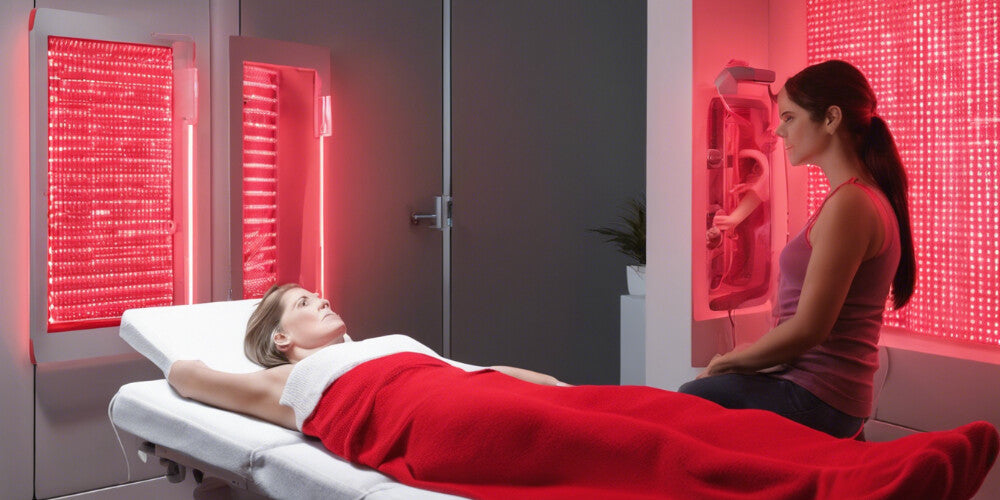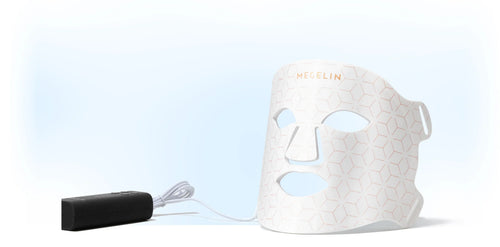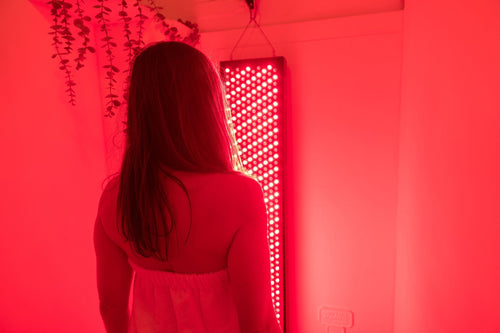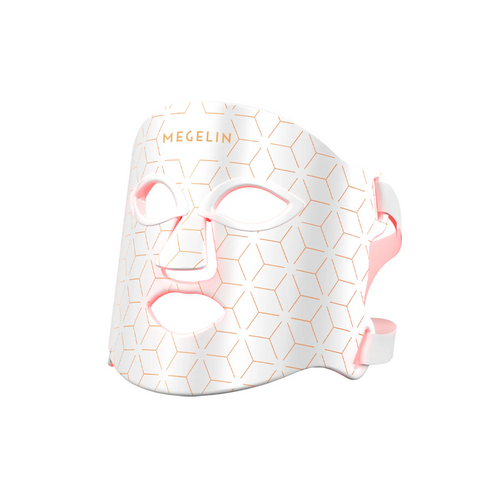
How Red Light Therapy Enhances Mental Acuity
megelinbeautyIn the quest for optimal brain health and enhanced cognitive function, red light therapy for mental acuity emerges as a groundbreaking approach, drawing attention from researchers and health-conscious individuals alike. As mental acuity defines our ability to think clearly, remember, pay attention, and make quick, sharp situational judgments, maintaining or improving this aspect of cognitive health is crucial for everyone, from professionals seeking peak executive function to older adults aiming to preserve memory and combat cognitive decline. Recent studies suggest that red light therapy, known for its role in improving sleep quality, reducing neuroinflammation, and boosting cellular energy, could also significantly impact cognitive functions, offering a beacon of hope for conditions ranging from brain fog and Parkinson's disease to general cognitive decline.
This article will delve into how red light therapy works, illuminating the science behind its potential to enhance neural communication, foster neuroplasticity, and improve overall brain health. We will explore the benefits of red light therapy for mental acuity, including its implications for memory, attention, executive function, and even mood. Additionally, practical tips on how to use red light therapy for the brain, tailored for those seeking to improve mental acuity or manage conditions like anxiety and neurological disorders, will be provided. By examining the intersection of red light therapy with key aspects of mental health such as ATP production, brain oxygenation, and circadian rhythm, readers will gain a comprehensive understanding of how this innovative therapy could be pivotal in enhancing cognitive function and defining mental acuity.
Understanding Mental Acuity
Mental acuity, often interchangeably referred to as cognitive acuity, encompasses a range of brain functions crucial for daily living and overall well-being. This section delves into the components of mental acuity and explores how it tends to change as individuals age.
Components of Mental Acuity
Mental acuity is a multifaceted concept that includes several key cognitive abilities:
- Information Processing: The brain's capacity to process incoming information, crucial for making logical decisions swiftly and accurately, is a core aspect of mental acuity [1].
- Memory Storage: This involves the brain's ability to store and recall information, a process that is directly influenced by the efficiency of sensory information processing [1].
- Attention: The ability to maintain focus on a specific task or stimulus despite potential distractions is another critical component of mental acuity [1].
- Situational Judgment: Effective mental acuity aids in recognizing the appropriate response in various scenarios, thereby facilitating optimal decision-making processes [1].
These components are not only vital for routine tasks but also play a significant role in an individual's ability to adapt to new challenges and learn new skills, regardless of age [2].
Age-Related Cognitive Decline
While some aspects of mental acuity, such as vocabulary and verbal reasoning, may improve or remain stable with age, other areas typically experience a decline [3][2]. Common age-related cognitive changes include:
- Slower thinking and processing speeds.
- Challenges in multitasking.
- Difficulties with sustained attention and memory recall [3].
Research indicates that structural changes in the brain, such as decreased volumes in the hippocampal, frontal, and temporal lobes, contribute to these cognitive shifts [3]. Despite these changes, aging also brings about positive cognitive adaptations. For instance, older adults often exhibit an expanded vocabulary and a deeper understanding of language nuances due to years of accumulated knowledge [2].
However, it's crucial to distinguish between normal cognitive aging and more severe forms of cognitive decline, such as those seen in mild cognitive impairment (MCI) and dementia. MCI is characterized by cognitive changes that are noticeable but not severe enough to interfere with daily activities, whereas dementia significantly impacts daily functioning [3].
Understanding these distinctions and the underlying factors affecting mental acuity can empower individuals to seek appropriate interventions and maintain cognitive health into later life.
How Red Light Therapy Works
Mechanism of Action
Red light therapy, also known as Photobiomodulation (PBM) or low-level laser therapy, utilizes specific wavelengths of red and near-infrared light to elicit biological changes at the cellular level. The primary mechanism involves the absorption of light by mitochondrial chromophores, particularly cytochrome c oxidase (CCO). This absorption enhances mitochondrial function and stimulates increased production of adenosine triphosphate (ATP), the energy currency of the cell [4][5].
The process begins when light photons are absorbed, leading to a cascade of cellular reactions. These include the dissociation of inhibitory nitric oxide from CCO which boosts enzyme activity and supports mitochondrial respiration [5]. As a result, there is an increase in ATP production along with a brief surge in reactive oxygen species (ROS) and nitric oxide, which play critical roles in cellular signaling and inflammatory responses [4].
Moreover, PBM induces secondary effects such as modulation of calcium levels within cells and influences various transcription factors. These factors promote cell survival, proliferation, and migration, essential for tissue repair and regeneration [4]. Notably, PBM has shown to reduce oxidative stress by up-regulating antioxidant defenses, particularly in cells under oxidative stress or within disease models [4].
Specific Wavelengths
The effectiveness of red light therapy is highly dependent on using specific wavelengths. The most beneficial wavelengths range between 630 to 660 nm for red light and 810 to 850 nm for near-infrared light. These ranges are optimal for penetrating tissue and stimulating mitochondrial and cellular functions [6].
Wavelengths outside of these ranges, particularly between 700 nm to 750 nm, have shown limited biochemical activity and are less frequently used in therapeutic settings [5]. The light sources commonly employed in red light therapy include various laser diodes and LEDs, such as helium-neon (HeNe), gallium arsenide (GaAs), and gallium aluminum arsenide (GaAlAs) [5].
These specific wavelengths have been shown to reduce inflammation not only in the brain but also in other critical areas such as the lungs, spinal cord, and abdominal fat. This broad anti-inflammatory effect is crucial for treating a variety of conditions, from neurodegenerative diseases to traumatic injuries [4]. Additionally, the stimulation of cerebral blood flow and increased brain oxygenation are key factors in supporting brain health and recovery from neurological disorders [6].
By harnessing the power of these specific wavelengths, red light therapy offers a non-invasive, promising approach to enhancing brain function and overall cellular health.
Benefits of Red Light Therapy for Mental Acuity
Red light therapy, recognized for its profound effects on physical health, extends its benefits to enhancing mental acuity, particularly through improved cognitive function and mood stabilization. This therapy leverages the power of specific light wavelengths to stimulate brain and neurological health, offering significant advantages for mental performance and emotional well-being.
Improved Cognitive Function
One of the most significant benefits of red light therapy is its ability to enhance cognitive functions such as memory, attention, and information processing. Studies have shown that this therapy helps in maintaining and improving executive functions which are crucial for decision-making and high-level thinking. The mechanism behind this involves the stimulation of mitochondrial activity in brain cells, which enhances energy production and efficiency in neural pathways. This increased cellular energy boosts cognitive abilities, allowing for quicker thought processes and better problem-solving skills.
Moreover, red light therapy has been linked to improved neuroplasticity, the brain's ability to reorganize itself by forming new neural connections. This adaptability is essential for learning new skills and recovering from brain injuries. Enhanced neuroplasticity not only supports cognitive flexibility but also aids in the recovery process following neurological damage.
Enhanced Mood and Sleep
The impact of red light therapy extends beyond cognitive enhancement to include significant improvements in mood and sleep quality. By regulating serotonin levels, which influence mood and anxiety, red light therapy can lead to a more balanced emotional state, reducing symptoms of depression and anxiety. This is particularly beneficial for individuals experiencing mood swings or those with mood-related disorders.
Additionally, the therapy's ability to influence circadian rhythms positively affects sleep patterns. Proper exposure to red and near-infrared light can help synchronize the body's internal clock, leading to improved sleep quality and duration. Better sleep not only aids in cognitive function and mood regulation but also contributes to overall health and well-being.
The dual benefits of improved cognitive function and enhanced mood and sleep make red light therapy a compelling non-invasive option for boosting mental acuity and enhancing quality of life. As research progresses, the potential applications of this therapy in psychiatric and neurological health continue to expand, promising a brighter future for individuals seeking holistic approaches to mental health.
Practical Tips for Using Red Light Therapy
Choosing the Right Device
When selecting a red light therapy device, it is crucial to opt for a medical-grade unit that delivers sufficient light intensity for therapeutic benefits. Devices such as small LED face masks often lack the power needed to provide significant health improvements. Instead, a robust LED device that emits both red and near-infrared (NIR) wavelengths is recommended, as these are critical for treating a variety of conditions, from skin disorders to deep-seated inflammation [7].
Moreover, the choice of wavelengths is essential. The therapeutic ranges are typically between 660 nm for red light, which is beneficial for superficial issues, and up to 880 nm for NIR light, which penetrates deeper to address joint pain and internal inflammation. It is also important to ensure that the device specifies these wavelengths to guarantee effectiveness [8].
Optimal Treatment Duration
The duration and timing of red light therapy are key factors in achieving optimal results. Research indicates that a brief exposure of about 3 minutes per session can significantly enhance cognitive functions such as vision, with effects lasting up to a week. However, these sessions should ideally be conducted in the morning to maximize benefits, as studies have shown no significant improvements when therapy is administered in the afternoon [9].
For regular home use, it is advisable to engage in daily sessions of 15-20 minutes. Consistency is vital, as the advantages of red light therapy, including enhanced mood, energy levels, and mental clarity, are most pronounced with regular use. Devices like the KOZE Red Light Therapy units offer flexibility with settings for both short and extended exposure, accommodating various treatment needs [8].
In addition to the duration, the method of application also plays a role. For example, positioning oneself close to the device and directly facing it ensures maximum light absorption. It is also recommended to use light-blocking goggles to protect the eyes from the intensity of the light, although the treatment itself is safe for ocular health [7].
By adhering to these practical tips and understanding the specifics of device selection and treatment scheduling, users can effectively harness the cognitive and health benefits of red light therapy.
Conclusion
Throughout this article, we've explored the multifaceted benefits of red light therapy, particularly focusing on its ability to enhance mental acuity, cognitive functions, and emotional well-being. From delving into the scientific mechanisms that underpin its effectiveness to highlighting practical advice for incorporating this therapy into one's wellness regime, we have seen how red light therapy stands as a beacon of hope for those seeking to improve their brain health and overall quality of life. The discussions underscore not only the therapy's potential in boosting mental sharpness and emotional stability but also its role in fostering a holistic approach to health maintenance and cognitive preservation.
As we move forward, the significance of red light in enhancing cognitive function and mood becomes increasingly clear, marking it as a pivotal component in the domain of non-invasive therapeutic options. While we navigate through the options available to support our mental and neurological health, red light therapy emerges as a compelling choice grounded in scientific research and practical success. Thus, embracing this innovative therapy could be a transformative step toward achieving improved mental acuity, better mood stabilization, and an enhanced quality of life, ushering in a new era of cognitive health optimization and overall well-being.
FAQs
1. How does red light therapy contribute to improved mental health?
Red light therapy is believed to possess anti-inflammatory properties, which may be beneficial since inflammation is linked to several mental health issues. By reducing inflammation, red light therapy could improve mental well-being.
2. Can red light therapy enhance brain function?
Yes, red light therapy can impact brain function positively. The photons from red and near-infrared light penetrate the skull and reach brain cells, stimulating mitochondria to produce more ATP. This process can lead to enhanced mental clarity and sharper thinking.
3. What are the psychiatric benefits of light therapy?
Light therapy, a low-risk treatment, has proven effective in treating various mental health disorders. It works by resetting the body's internal clock and promoting balance and well-being through exposure to specific light wavelengths or using lightboxes.
4. Why does exposure to red light make me feel better?
Red light therapy is thought to stimulate the mitochondria, the "power plant" of your body's cells, enhancing their energy production. This increase in energy allows cells to perform functions like skin repair, boost new cell growth, and enhance skin rejuvenation more efficiently, contributing to a feeling of overall improvement.
References
[1] - https://www.vielight.com/what-is-mental-acuity/
[2] - https://www.nia.nih.gov/health/brain-health/how-aging-brain-affects-thinking
[3] - https://memory.ucsf.edu/symptoms/healthy-aging
[4] - https://www.ncbi.nlm.nih.gov/pmc/articles/PMC5523874/
[5] - https://www.ncbi.nlm.nih.gov/pmc/articles/PMC4126803/
[6] - https://platinumtherapylights.com/blogs/news/brain-light-therapy
[7] - https://platinumtherapylights.com/blogs/news/red-light-therapy-for-mental-acuity
[8] - https://kozehealth.com/blogs/news/red-light-therapy-for-brain-health
[9] - https://www.medicalnewstoday.com/articles/3-minutes-of-deep-red-light-can-improve-a-persons-vision











